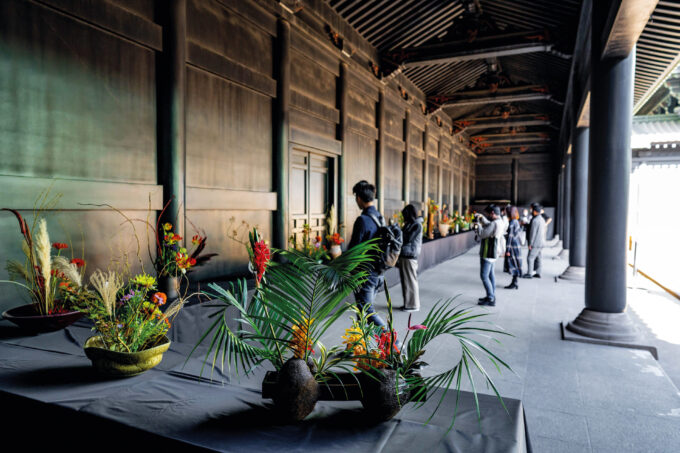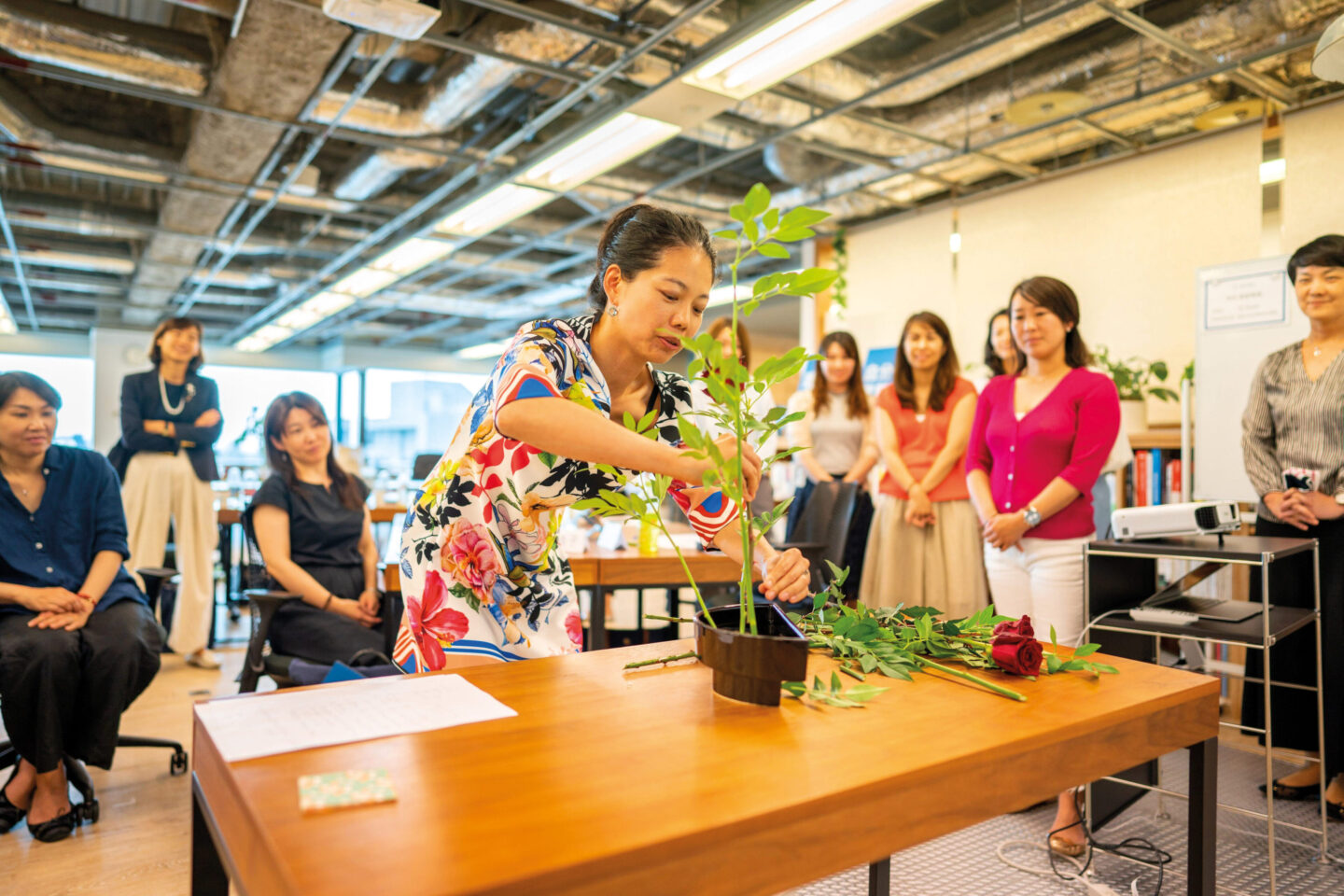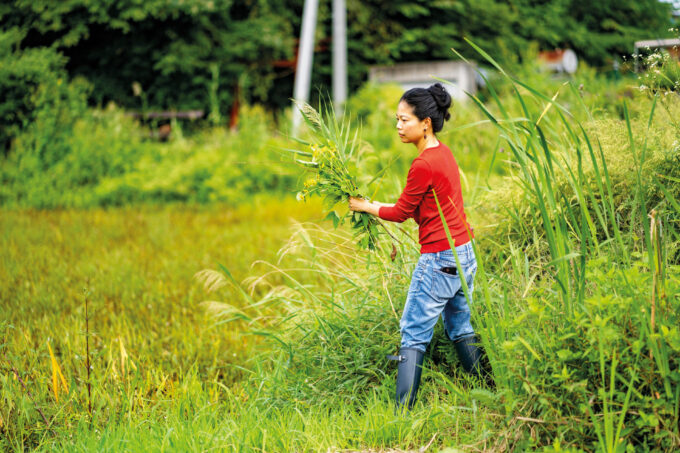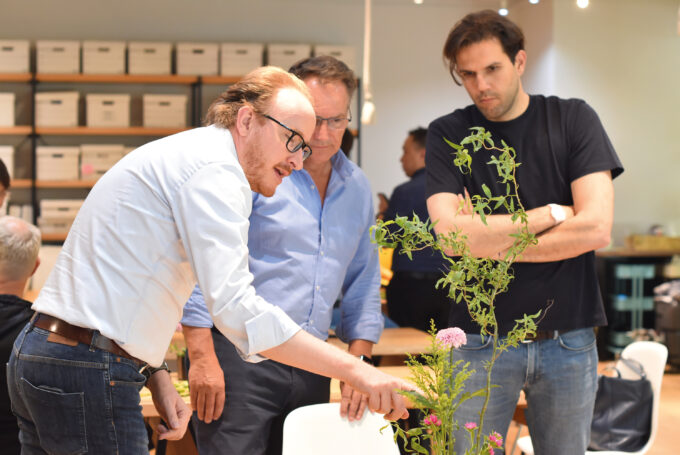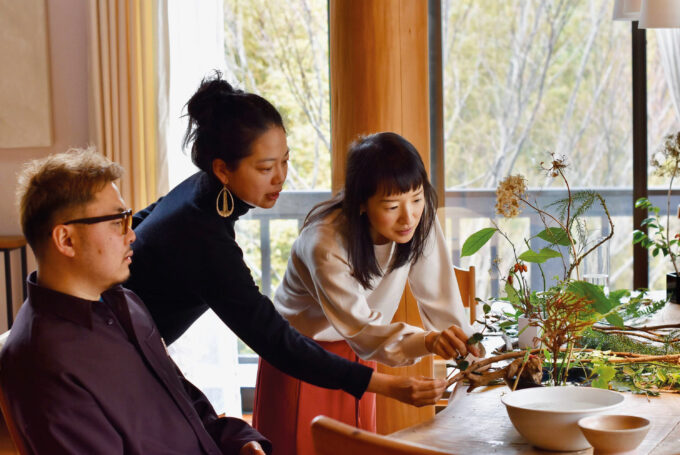Working on ikebana as a team means relinquishing our desire to control, letting go of our ego, and existing in the present. Out of this process something beautiful can emerge.
Let flowers live. That’s the concept that lies at the heart of ikebana, the traditional art of Japanese flower arrangement. Every time you hold a flower in your hand, you think about how you can help it look as beautiful as possible and in harmony with the other flowers. “Think” may not be the right word, though. After years of practice, your body moves instinctively to cut the flower and place it in the vase, without even thinking. It is as if your body knows how to let the flower live before your head does. If your ego starts kicking in, thinking, “I want to create a great ikebana work”, it becomes about you, not the flowers, and you end up failing to let the flowers live. Ikebana is the art and practice of continuously letting go of your ego and being attuned to the voice of flowers.
I have practiced ikebana for decades while working in management consulting and for a business school. Until very recently, ikebana was something very personal and private, something I just enjoyed doing in the small, closed ikebana community. But I started to observe that the nature of management studies and leadership education was changing, and there were more and more overlaps between what I had learned in ikebana and what was being researched and taught in business schools. What if I could bridge these two worlds, ikebana and business, and let them learn from each other? That’s why I founded IKERU in 2017 with the mission to bring the wisdom of ikebana to business and leadership education. For the past few years, through offering various ikebana programs, I have seen the positive impact that it can have on organizations and leaders.
So, what can ikebana teach today’s businesses? Why is it important for leaders to learn from this ancient practice?
Ikebana’s origins and evolution
Ikebana cannot be traced back to one moment or tradition in history. It is said that ikebana is inspired by both Buddhism and Shintoism, where the former arranges flowers and serves the Buddha statue and the latter sets up a specific tree branch to welcome the Divine. Also, in the old days, people enjoyed collecting flowers and arranging them in a vase, as documented in the Japanese essay Makura no Soshi, written around 1,000 years ago by a high-ranking court lady who served the empress: “A big blue-green precious vase was placed at the terrace and quite a few exquisite cherry-blossom branches were put in the vase. The cherry flowers were so in bloom that they were overflowing from the terrace.”
Gradually, arranging flowers evolved from a simple daily routine that anyone could do to a more sophisticated practice in which you needed to dedicate time to learn techniques and its philosophy. It was recorded that, in the 14th century, there were people known as “flower masters” who were widely recognized for their flower-arranging skills and were sometimes invited by powerful samurai lords and court nobles to arrange flowers on their estates. One of the oldest existing ikebana textbooks was published in the 16th century by a then well-known flower master who defined ikebana as the “art of letting the true nature of nature emerge in the vase” and illustrated how to put it into practice.

Audio available

